|
| |
Family
Cicadellidae
- This page contains pictures and information about Black Flat-head Leafhoppers
that we found in the Brisbane area, Queensland, Australia.
-
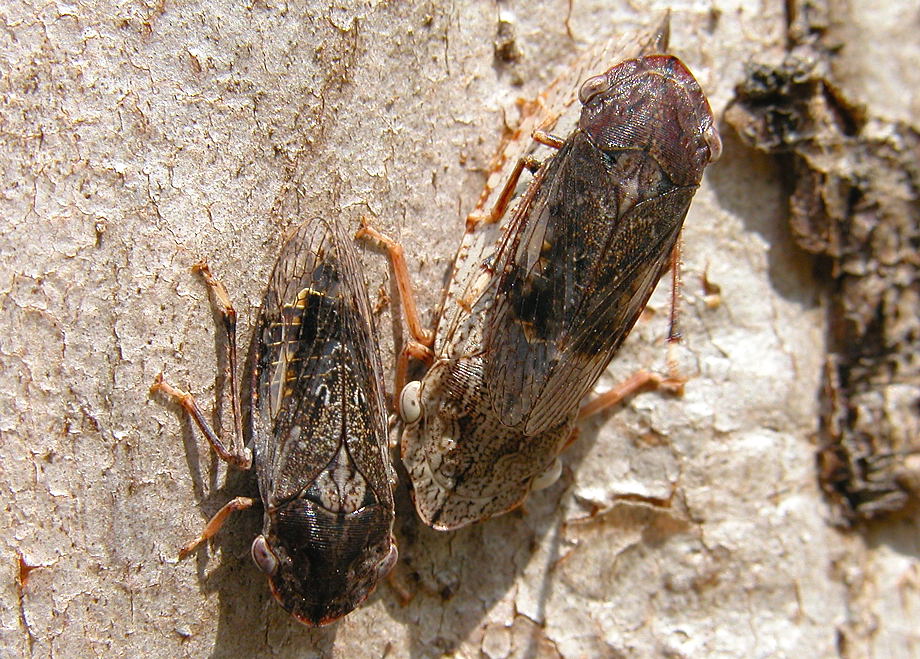 - Body length female 20mm, two males 15mm
-
- Black Flat-head Leafhopper are common on smooth bark gum tree trunks from late winter to late summer in
Brisbane Eucalyptus forest. The adults are
winged and dark brown in colour. Male and female look quite different. Males
are smaller, darker and with clear wings. Their larvae are very flattened. They are all
living on gum tree trunk.
-
Female
 
 -
- The patterns on their body vary quite a bit between individuals.
-
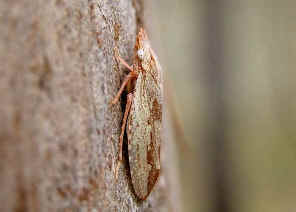 
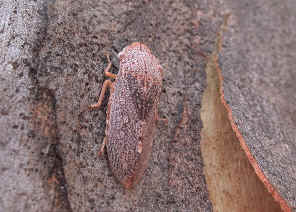 -
-
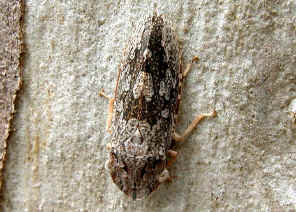
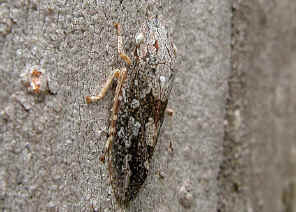

-
- They are pale brown in colour with dark brown patterns. Those patterns on
each individuals are different. They rest on large smooth bark gum tree
trunks with either face upwards of face downwards.
-
Male


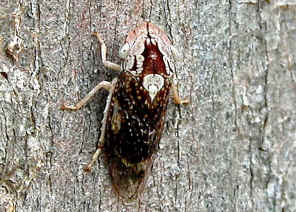 -
- The male and female look different. We found that the male is more seen most
of the time. We only saw
the females a few times. Female adults are mostly found during
September and October.
-
 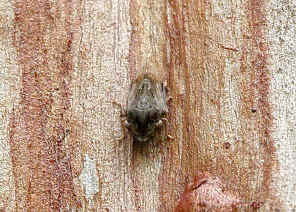
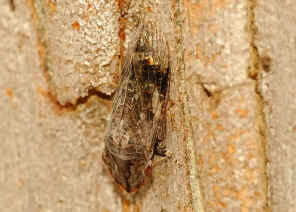 -
- They usually found resting or feeding on the trunk of smooth-barked gum trees where remnants of old bark
provide shelter when necessary. They are highly variable in colour, from
dark brown to pale brown.
-
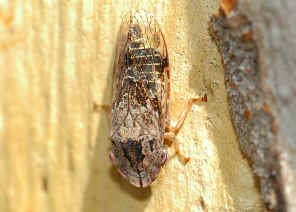
  -
- The patterns on their body vary quite a bit between individuals.
-
-
 
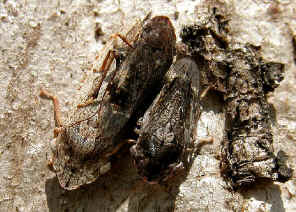 -
- On late August we found the three males and a female Black Flat-head
Leafhoppers on a large gum tree trunk. When we taking photos, those males
slowing walk away. The female did not move even disturbed. On the other side
of the tree trunk we found a hopper nymph.
-


 -
 -
Nymph
- The nymphs were more often seen than the adults. They are quite common on
smooth bark gum trees during summer time. However, they are very well camouflage,
to spot them will need some patience.
-
 

- Nymph, body length 20mm
-
- Nymphs are pale brown in colours with highly flattened body. They are
hardly be noticed.
-
 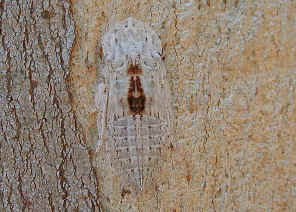

-
- This nymph was almost invisible on the gum tree trunk in Cotton Hill
during mid summer. When we move closer to it, it ran quickly around the tree
trunk. Its body was extremely flat and make no shadow at all.
-



-
- They sometimes found with head facing upwards and sometimes downwards.
-
-



-
- Reference and links:
- 1. Insects
of Australia, CSIRO, Division of Entomology, Melbourne University
Press, 2nd Edition 1991, pp 469-470.
- 2. Insects of Australia and New Zealand - R. J. Tillyard, Angus &
Robertson, Ltd, Sydney, 1926, p165.
- 3. Stenocotis
depressa
- Fletcher, M.J. and Larivière, M.-C. (2001 and updates).
- 4. Stenocotis
depressa - Australian Biological Resources Study, Department of
the Environment and Heritage.
- 5. Northern
Territory Insects, A Comprehensive Guide CD - Graham Brown, 2009.
- 6. Phylogeny and systematics of the leafhopper subfamily Ledrinae (Hemiptera: Cicadellidae) - Jones, J.R. & Deitz, L.L. (2009), Zootaxa 2186:
1-120, plate F.
Back to Top
[ Up ] [ The World's Largest Leafhopper ] [ Black Flat-head Leafhopper ] [ Small Flat-head Leafhopper ]
| |
|






































